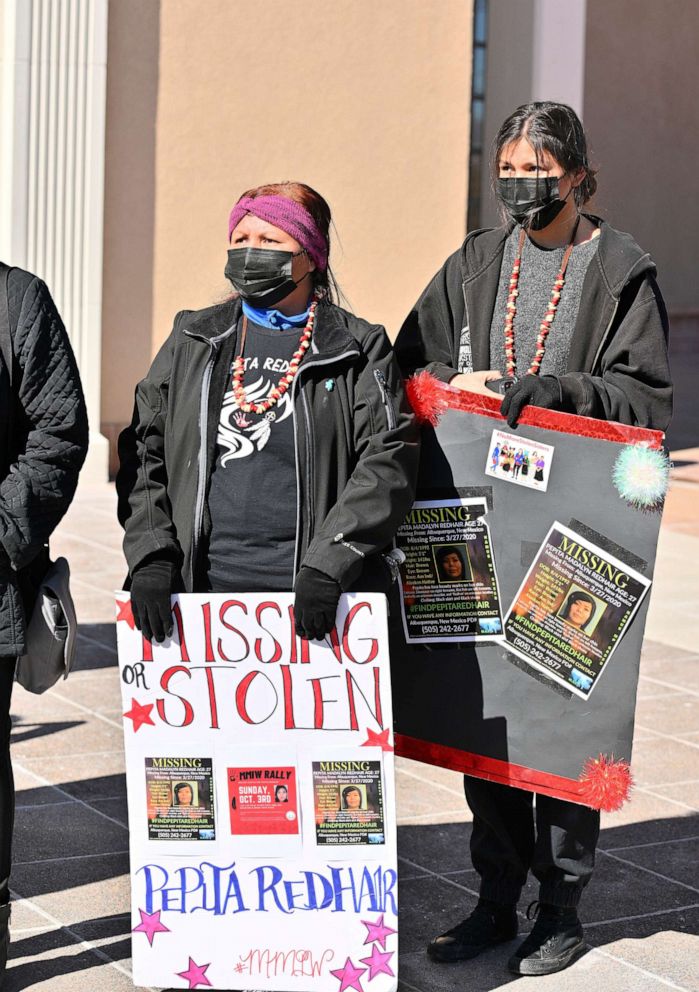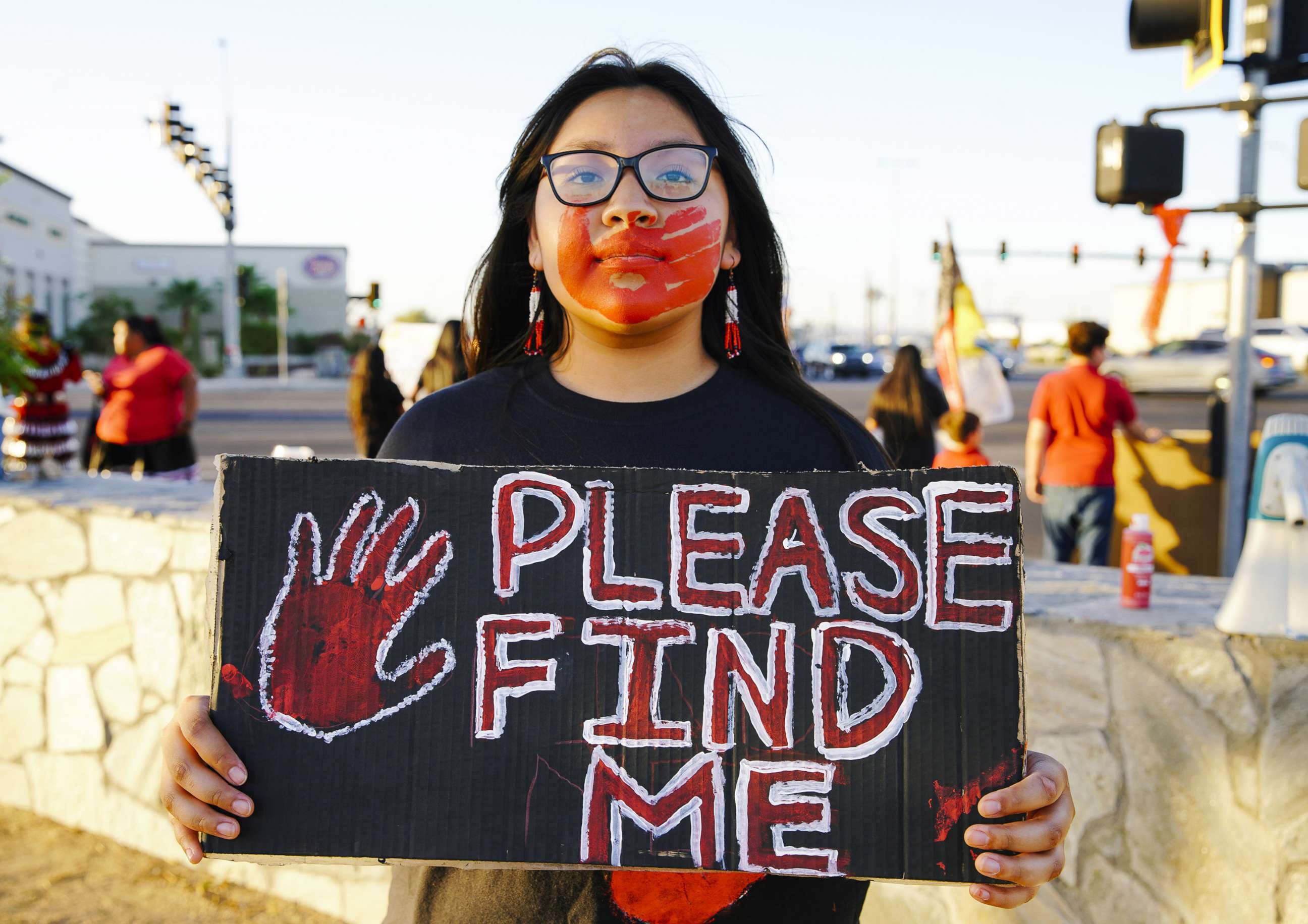FBI releases list of missing Native Americans in New Mexico and Navajo Nation
More than 170 people are currently on the list.
The FBI has released a list of more than 170 Native Americans who have been confirmed to be missing throughout New Mexico and the Navajo Nation.
The list will be regularly updated, as several federal agencies try to address the issue of missing and murdered Indigenous and Native people.
"Every missing person is important. For a long time, the issue of missing Native Americans has been in the news and a lot of people have been wondering if anybody is paying attention," Special Agent in Charge Raul Bujanda of the Albuquerque FBI Division said in a press release. "I am here to assure you the FBI has been paying attention, and together with our partners, we are taking a significant step towards justice for these victims, their families, and communities."
Officials say that publicizing the faces and names of those who are missing and regularly updating the list will increase the transparency and accountability of these efforts.
"This is an important step among many, and this multi-agency effort is crucial to provide justice and victim services to communities that have historically been underserved," said New Mexico Attorney General Hector Balderas in a statement.

The New Mexico Department of Public Safety is the first agency in the country to modify its the National Crime Information Center Missing Person Form to allow agencies to identify Indigenous people and their respective tribes, pueblos or nations in their reporting, according to Jason R. Bowie, the department's secretary.
Criticism against law enforcement agencies from activists often cites poor reporting and identification in the lack of data on missing and murdered Indigenous people.
"We intend to find answers and justice for these women and families in our community," Bowie said. "For generations, a disproportionately high number of missing and murdered indigenous women and relatives have gone unreported. We resolve to address and prevent further tragedy in our state; everyone deserves to feel safe in their neighborhoods."
How widespread is this issue
Approximately 1,500 American Indian and Alaska Native missing persons have been entered into the NCIC throughout the U.S., and approximately 2,700 cases of murder and nonnegligent homicide offenses have been reported to the FBI's Uniform Crime Reporting (UCR) Program.
However, advocates say these numbers do not capture the full scope of the issue, since law enforcement agencies do a poor job at maintaining complete, accurate records of the data on these cases.
FBI officials say it took almost six months to combine and verify databases of missing Indigenous persons in New Mexico to create this list.
"Many records of missing Indigenous persons were incomplete or outdated because the record was not updated once additional details were made available or once the person was located," the FBI said in a press release.
Activists have told ABC News that records of missing Indigenous people are often incomplete or outdated.
A study by the Urban Indian Health Institute (UIHI) found that many U.S. law enforcement systems don't include a racial category for American Indian, Native American, or Alaska Native, or these systems categorize these people inaccurately.

However, victimization rates for many violent crimes against Indigenous and Native community members remain disproportionately high.
Native American and Alaska Native rates of murder, rape and violent crime are all higher than the national averages, according to the Bureau of Indian Affairs (BIA).
According to the Center for Disease Control and Prevention, the murder rate is 10 times higher than the national average for women living on reservations, and the third leading cause of death for Native American women.
Other efforts by the federal government
In April 2021, Interior Secretary Deb Haaland formed the Missing & Murdered Unit (MMU) at the BIA to provide more resources to investigate thousands of unsolved cases of missing and murdered Native Americans.
The MMU will work with Tribal investigators, as well as the Bureau of Indian Affairs and the FBI, to support law enforcement resources throughout Indian country and help uncover new information in witness testimony, material evidence and suspects, Haaland said.
Haaland is also implementing the Not Invisible Act, which combines the efforts of at least 27 federal and non-federal members to focus on reducing violent crime against American Indians and Alaska Natives.
The Bureau of Indian Affairs also has a running list of open cases concerning Indigenous people across the country who have been missing or murdered in an effort to raise awareness.




